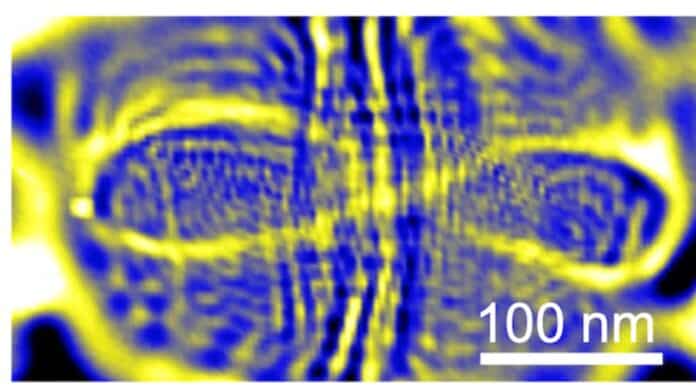
By Jay Kakade 3 Dec, 2024
Collected at: https://www.techexplorist.com/study-confirms-40-year-old-quantum-theory/93967/
In 1984, physicist Eric J. Heller proposed a theory stating that electrons are confined in a quantum space and move along a definite orbit rather than in a chaotic jumble of trajectories. Around 40 years later, a team of researchers at the University of California Santa Cruz confirmed that the unique electron orbits are known as “quantum scars.”
The new study, published in Nature, demonstrates electrons’ particle and wave-like properties. Electrons often behave counterintuitively in the quantum realm. In some cases, their waves interact with each other in such a way that they influence movement into certain patterns. These common paths are called unique closed orbits.
Researchers skillfully combined imaging techniques and precise control over electron behavior within graphene to capture the patterns of quantum scars. Graphene‘s unique properties and two-dimensional structure make it a suitable candidate to observe quantum effects.
In this experiment, the team used a finely tipped probe of a scanning microscope to create a trap for electrons. Then, they hovered the probe close to a graphene surface to detect electron movements. This was done without physically disturbing the electrons.
According to co-author Jairo Velasco, Jr., as electrons move from one point to another in a closed orbit, the property of the subatomic particle is better preserved. This could have wide applications in everyday electronics, demonstrating how data encoded in electrons’ properties could be transferred without loss.
“One of the most promising aspects of this discovery is its potential use in information processing. By slightly disturbing, or ‘nudging’ these orbits, electrons could travel predictably across a device, carrying information from one end to the other,” Velasco said.
Since Heller’s theory is now proven, researchers now have a foundational ground to explore its potential applications. As transistors are already at the nanoelectronic scale, utilizing quantum scar-based designs could make it more efficient.
Additionally, it could enhance devices like computers or smartphones that rely on densely packed transistors to boost processing power.
“For future studies, we plan to build on our visualization of quantum scars to develop methods to harness and manipulate scar states,” Velasco said.
“The harnessing of chaotic quantum phenomena could enable novel methods for selective and flexible delivery of electrons at the nanoscale—thus, innovating new modes of quantum control.“
Furthermore, the team employed a billiard visual model to illustrate the classical mechanics of linear versus chaotic systems. A Billiard is a bounded area that reveals how particles inside move in a common shape called a Stadium. In this shape, the ends are curved and the edges straight.
In this chaos experiment, the team created a stadium billiard of graphene of 400 nanometers in length. Scanning it with a tunneling microscope demonstrated quantum chaos in action. This is the first instance of witnessing a pattern of electron orbits within the stadium billiard.

“I am very excited we successfully imaged quantum scars in a real quantum system. Hopefully, these studies will help us gain a deeper understanding of chaotic quantum systems,” said co-author Zhehao Ge.
Journal Reference
- Ge, Z., Graf, A. M., Slizovskiy, S., Polizogopoulos, P., Taniguchi, T., Watanabe, K., Van Haren, R., Lederman, D., I., V., Heller, E. J., & Velasco, J. (2024). Direct visualization of relativistic quantum scars in graphene quantum dots. Nature, 635(8040), 841-846. DOI: 10.1038/s41586-024-08190-6

Leave a Reply